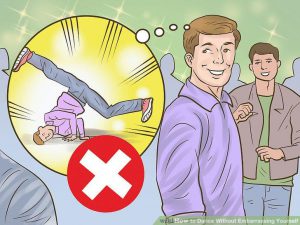Using a Smartphone to Prep a Monologue or Song
Rob Richardson | Last updated: August 07, 2018
Hello, dear friends (and complete strangers). The StageAgent advice column is back—this time to talk to you about that device in your hand. No, not the TV remote (does anyone actually watch TV anymore?); I’m talking about your smartphone. That insanely expensive, powerful but fragile addiction glued to our eyes. With a smartphone and a Wi-Fi signal, I can find the answer to almost any question I can think to ask.
So why do I mostly use it to play mindless games? I’m looking at YOU, Angry Birds.

Fortunately, there are smarter people than I who have learned to use this tool for good, and I learned from them, so now I give this knowledge to you.
You’d be hard-pressed to find an actor that hasn’t practiced (mugged) in the mirror when prepping a role, monologue, or song. And while the mirror is a perfectly natural choice, the problem with the mirror is in the user. It’s human nature for all of us to look ‘where we want to look.’ We look at our hair, our waistline, our arms—we look at the thing we want others to see and appreciate. While in private moments we may look at what we perceive are flaws or imperfections, overall, we are looking in the mirror to find validation.
Enter the camera phone, now capable of greater video and photographic ability than ever before. We’ve all heard the saying, “the camera doesn’t lie.” I wouldn’t say that’s 100% true (why does the camera add 10 pounds?), but on the whole, you can accept that.
Let’s say you are preparing for an upcoming audition for the road company of Come From Away. You’ve researched the show and dutifully read through the StageAgent guide. You’ve chosen a song using StageAgent's Audition Song Finder, and now you are ready to practice your piece using a mirror. You naturally connect with your reflection, looking for all the moments that you have carefully crafted. But what you don’t notice, while paying attention to your face, hair, muscles, whatever, is that you are sitting in one hip. Your hand is nervously clenching up, doing something weird. You stand with your knees locked, face fully engaged but body stiff as a board. You look unnatural.

That’s where recording your work comes in. This is a more complete, unbiased “reflection.” Set your phone or tablet up in a tripod (you can even get Bluetooth remote controls for a more polished look), make sure you have adequate lighting (more on that later), and record yourself a couple of times. Go back and look at them—this is truly what you are displaying, and what most auditors will see. Then try a new recording, paying attention to the weaknesses displayed in the first few tries. Smooth those spots out and remember what you did! Practice these moments so they become automatic.
Before I move away from the mirror...it is not uncommon to be in an audition studio in NYC and find yourself in an audition with a mirror behind the people you are auditioning for! Many are kind enough to block those mirrors or arrange the room in a different way, but if you find yourself in that spot, you’ve got to block that mirror out. A good point of focus for your audition is slightly above and to the side of the auditor’s head. This will keep you from “watching” yourself, and from making the auditors uncomfortable with unwanted eye contact. They are your potential employers, not your scene partners.
Regarding the sound quality, don’t be too hard on yourself if you don’t sound like you think you should sound. We don’t hear ourselves the way others do, plus phones and tablets don’t really have sophisticated sound software, so take it with a grain of salt. Do, however, be on the lookout for too much reverb (say your room has a loud echo), or if you can’t be properly heard at all.

What about feedback from peers? Sure, if you’ve got some trusted friends whose opinions you trust, it can be very valuable. I would avoid posting these practice videos to social media seeking feedback. Nothing is ever truly deleted from the World Wide Web, and you want your best foot forward.
Turning this conversation to self-tapes that are submitted to casting directors, all of the above info applies, with the following additions. Lighting is very important—no we are not skilled electricians—but make sure you aren’t in shadow and that you look as good as you can in that environment. Record yourself in landscape format, and shoot from the mid-chest up, making sure you are completely in the frame. A neutral background is preferred, but white causes lighting issues. If a casting notice requires a full body photo, then you can shoot that in portrait mode, but the landscape format translates better into how we all see the world.
I’m going to do a deep dive on self-taped auditions soon here for StageAgent, but this is the broad brush while we are talking technology.
You should be taping your practice. I know we are a media-obsessed, media-driven society, but this is a chance for you to really learn about yourself. And while you may see something you don’t love, you may also find something you do.
Last Updated: August 21, 2023

Rob Richardson